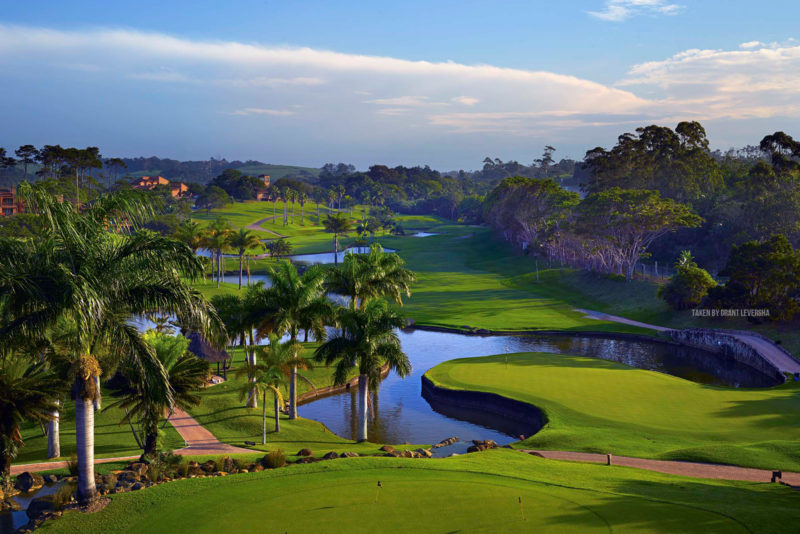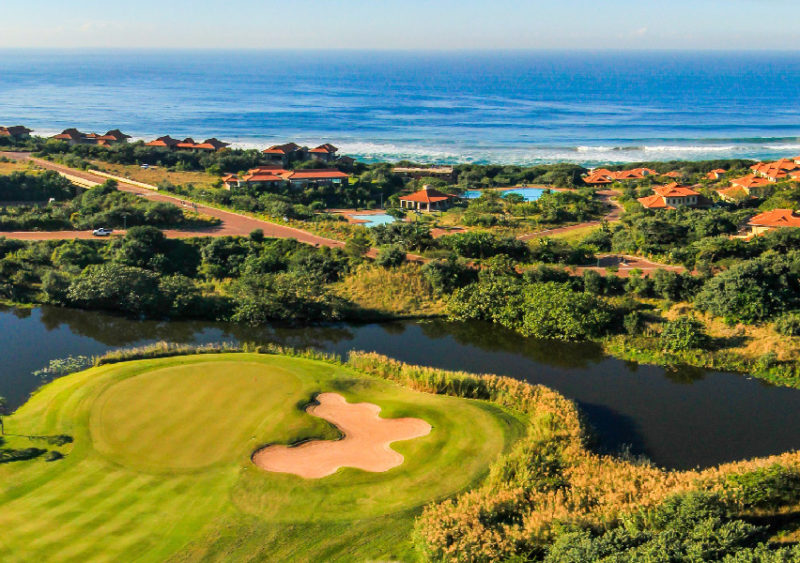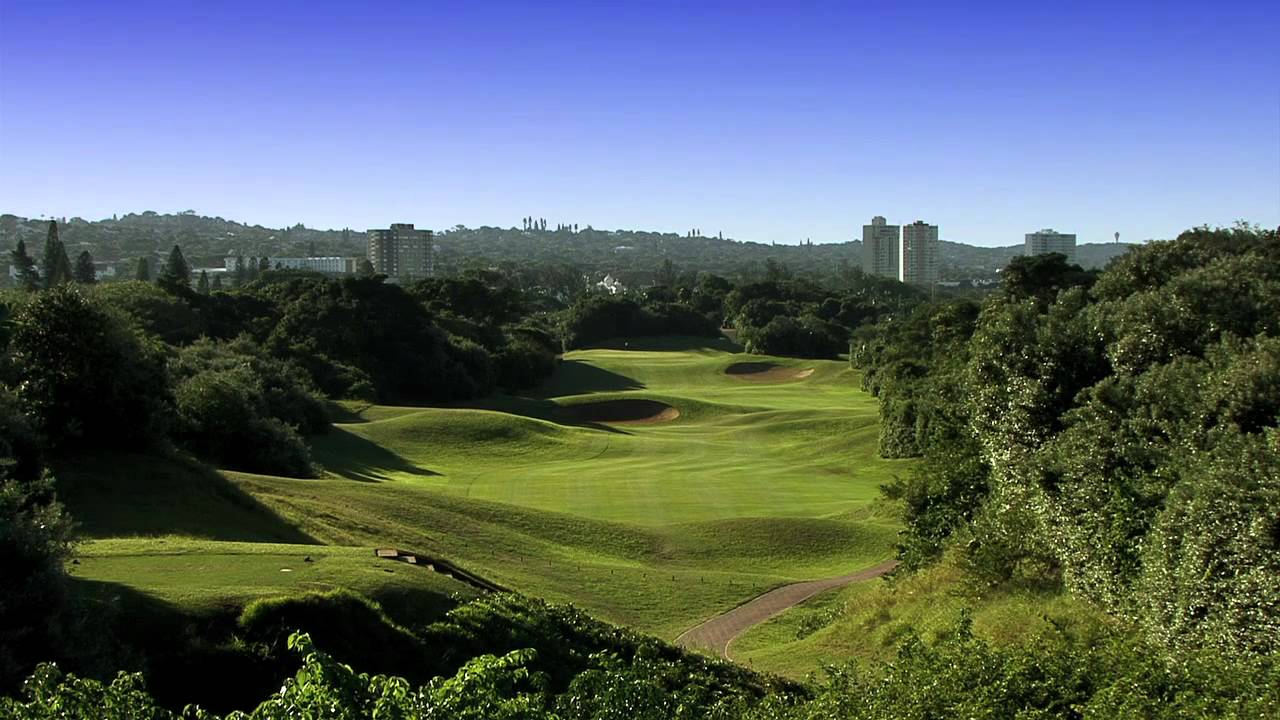This trip takes you half a world away, but that’s part of the appeal
Editor’s Note: This feature originally was originally published by GolfTrips.com, for whom this author also contributes.
DURBAN, South Africa (May 29, 2019) — If you’re like most Americans, the first thing that comes to mind when someone mentions South Africa likely has to do with Nelson Mandela, a wildlife safari, the 2010 World Cup where the fans tooted vuvuzelas during the soccer matches or something you’ve seen in the movies.
If you’re a golfer, the names Player, Els, Oosthuizen, Schwartzel and Grace also have a place in your mindset.
But have you ever really given the notion of traveling to South Africa, which is clear on the other side of the world and deep into the Southern Hemisphere, much thought?
Well, you should – even more so if you are a golfer and looking to play a variety of courses in differing climates and styles, from the prairielands to the beach to the mountains and even through vineyards.
In December 2015, a handful of my golf journalist colleagues and I were invited to sample a smattering of the best facilities in South Africa, teeing it up from such sublime settings as lush jungle, the natural dunes alongside the Indian Ocean, along the tranquil Bot River Lagoon, in the wine country of the Berg River Valley, on one of the world’s top 40 courses and in the shadow of Table Mountain.
Getting there is part of the fun
South Africa is obviously a long way away from anywhere in the United States. But there are non-stop flights available from many of the United States’ major airport hubs, and an upgrade to business class (with its totally reclining sleeper seats, three sumptuous meals and free liquor and myriad personal entertainment options) make the 18-hour, one-way flight (I know, gulp) actually enjoyable, especially when you realize what’s waiting for your when you land.
Our group began all over the United States (San Jose, Minneapolis, Austin, Chicago and Vermont) and met in either New York City (Kennedy Airport) or Washington D.C. (Dulles) to catch our South African Airways flights to Johannesburg. The service aboard was impeccable, and the flight attendants were friendly and all spoke perfect English, as well as the other 10 official languages of South Africa.
My flight stopped in Accra, Ghana for an hour to drop off and take on passengers and to refuel, but I never even got off the plane.
Once in Johannesburg, I checked into the Southern Sun Hotel on the grounds of O.R. Tambo International Airport and got a good night’s sleep. In the morning I had a sumptuous and expansive breakfast buffet in the open-air dining room that was filled with business travelers and tourists from all over the globe.

Playing on the southeastern coast
After breakfast, I headed back into the airport to meet with the group and board a small airplane for the hour and a half flight to Margate, a beach community on the coast of the Indian Ocean. From there we travelled south about 10 miles to the San Lameer Estates (golf resorts with a residential component here are called “estates”), a tropical paradise on the lower south coast of the province of Kwazulu-Natal.
We spent the night at the quaint, but lush, hotel and kept our windows closed when not in the rooms as small monkeys – which are everywhere in the trees like we have squirrels in the United States – would invade the residences if given half a chance.
Golf at the resort the next morning was at the eponymous course on site, a tight test of target golf routed through the jungle and designed by South African architect Peter Matkovich when the country’s favorite golf son, Gary Player, turned down the commission because he thought there wasn’t enough land for a top-flight course.
Matkovich’s course, which is carded at 6,104 meters (6,676 yards) and a par of 72, was built when a bit more land was acquired. It plays up and down hills and around lagoons and over creeks, with views of the ocean from the elevated tee box on the par-4 second hole and a good mix of risk-reward options. It’s a track that rewards good course management and decision making.
The facility features an expansive, modern clubhouse and the property also contains a par 3 course, an oceanfront beach and the Lagoon Bar and Grill, where we took two meals and consumed plenty of libations.
After the round we drove north two hours to the bustling metropolis of Durban, the second most populous urban area in South Africa and the country’s busiest port. We drove through the central business district during the afternoon rush hour and were all but overwhelmed by the sights, the sounds and the bustle of a thriving African city.
Our destination was The Oyster Box, one of Africa’s top resort hotels set 15 minutes north of Durban in Umhlanga.
Constructed in 1869 and originally used as a navigational beacon and a beach cottage, the property was first converted into a hotel in the 1930s and has since been expanded and modernized. With just 86 rooms, The Oyster Box is renowned for its spa and outdoor pools with spectacular views of the Indian Ocean.
In the morning we headed a little further north to the Zimbali Coastal Resort in Dolphin Coast and its Tom Weiskopf-designed five-star golf course. Weiskopf, you might have forgotten, won the South African PGA Championship in 1973.
The course at Zimbali is a big-shouldered track, with huge elevation changes and mounding and water and sand. The first 11 holes take you over rolling hills, which present ideal vantage points from which to enjoy the magnificent views. Thereafter, holes 12-18 explore the Zimbali indigenous forest.
Zimbali means “valley of flowers” in the Zulu language. The 6,524-meter (7,135-yard) course was fashioned in 1998 to live in harmony with its natural surroundings. The tee of the par 3 fifth hole gives golfers a view of the ocean over the edge of the jungle, while two of its par 5s – the third, which plays downhill, and the 17th, which heads back up, are the best chances for birdies here.

Durban Country Club and the Golden Mile
The afternoon sent us back into the heart of Durban and the peerless Durban Country Club, set in the literal shadow of the massive Moses Mabhida Stadium and just a half-mile from the Indian Ocean.
A course steeped in tradition and history, Durban Country Club opened in 1918 and boasts the unique claim of being the only course on the African continent to be rated in the Top 100 Golf Courses of the World by Golf Magazine USA and in the Top 10 in South Africa by Golf Digest SA. It has hosted the South African Open 17 times (more than any other club in the country), including the centennial event in 2010.
The combination of lush vegetation, sand dunes and stunning ocean views make this course one of the most unique, and challenging, in the world. One of the defining characteristics of Durban Country Club are the massive undulations in the fairways, especially the fifth, the eighth and 17th, as the course was built on natural sand dunes that are large and interesting.
The par 5 third hole is rated the best third in the world. It is played from an elevated tee to a narrow fairway with dense bush and a predatory bunker on the left-hand side. The narrow par4 18th is carded at just 250 meters (274 yards) and gives golfers a chance to end their round with a bang or a whimper.
Durban Country Club is a shot-makers course that you have to think your way around. Most golfers don’t make use of their driver until well into their round due to the narrowness of the opening holes. The first five holes are considered the toughest opening stretch in South Africa.
That evening we dined at The Big Easy, an upscale restaurant in the Durban Hilton Hotel on the Golden Mile founded and owned by Ernie Els.
The Golden Mile is one of the main tourist attractions in the area, a wide stretch of beach artificially separated by various piers that house art-deco buildings, apartments, tourist hotels, nightclubs and restaurants. Most of the Mile’s beaches are protected year-round by lifeguards and shark nets (yes, I said shark nets).
The night demarked the mid-point of our trip to South Africa, with plenty more to see on the southern coast and in Cape Town.










